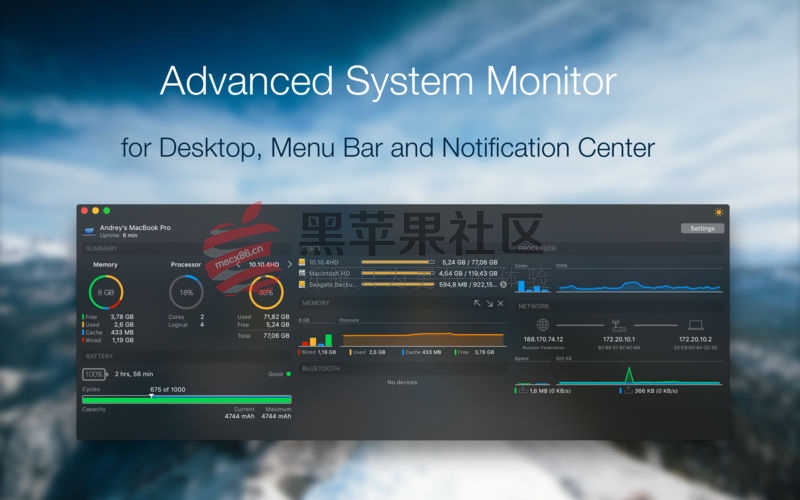

Perhaps that’s the real secret of Unified Memory. If iStatistica’s figures are anywhere near accurate, even when driving two external displays, the amount of memory being used by the GPU appears surprisingly small, and far less than that used by graphics cards in Intel Macs. Inevitably, WindowServer is usually close to the top of the list, particularly when few graphics-intensive apps are running. That shouldn’t include any being used by the GPU.īut you can’t use any of those to even guesstimate what’s being used by the GPU.Īnother useful indicator is the % GPU figure given in the CPU view, as that should be the proportion of work being performed by the GPU which is directly attributable to each process.

#Istatistica pro
With an M1 Pro driving just its internal display at low resolution that ‘looks like 1168 x 755’, iStatistica reports around 140 of 379 MB used.

However, iStatistica Pro claims to be able to show what it terms “GPU memory used”. At present, those tools can’t make any distinction, so working out what’s being used as video memory isn’t easy. Don’t be surprised if your 8 GB graphics card is fairly constantly using 7 GB.Īs M1 Macs don’t have video memory as such, that being used by the CPU, GPU or both has to be accounted for in system memory as shown by vm_stat and Activity Monitor.
#Istatistica full
Generally, video memory is managed to make full use of what’s available, to get most benefit from GPU acceleration, but to keep sufficient in reserve so as not to run out of free memory. Video memory doesn’t have that option, though, and excess data would have to be copied back to main memory, which results in an even bigger performance hit. In the traditional discrete memory architecture of main and video memory, we’re generally most interested in main memory use, as requiring more memory than is physically available results in the use of virtual memory, with some being paged out to disk, and a dramatic drop in performance. Where Unified Memory becomes more complex is monitoring its use.
#Istatistica software
It’s more common, though, for M1 software to use the shared storage mode, which ensures that both CPU and GPU can access the data. Metal offers different storage modes, which enable software to designate allocations from main memory for the exclusive use of the GPU, which could be useful for data being processed by the GPU alone, perhaps for a compute, render or blit pass. That doesn’t mean that all resources in memory can always be accessed by both CPU and GPU. By unifying memory into a single system resource, such transfers shouldn’t occur, significantly reducing overhead. The main disadvantage of having separate main and video memory is that most of what ends up on the display will have to be moved from main to video memory, and when the GPU is used for non-graphics work such as intensive computation, data has to pass both ways. Some tools, such as iStat Menus and iStatistica Pro, provide usage figures for both types. Previously, we’ve been used to our Macs having two separate memories, main memory accessed by the CPU, and what’s often referred to as VRAM in the graphics card, which is exclusively for the GPU. That simply means that there’s a single system memory which is accessed by the CPU, GPU and other parts of the M1 chip such as its Neural Engine. One of the headline features of Apple Silicon Macs is their use of Unified Memory.


 0 kommentar(er)
0 kommentar(er)
